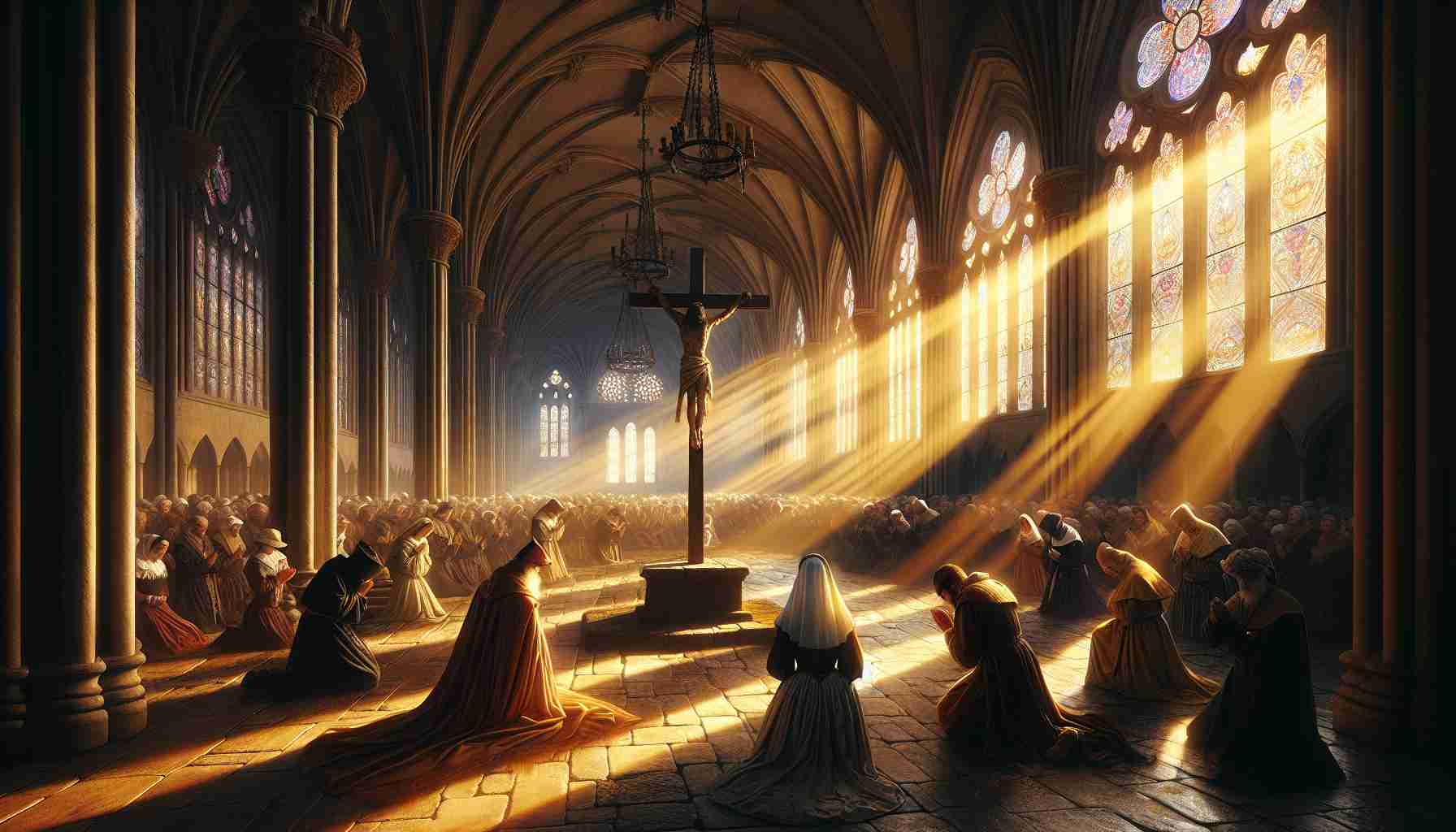

The courtyard of the Archiepiscopal Palace of Rouen lay hushed beneath the sunlit shiver of early summer. Dust trembled in the shafts of light angling through stained glass and falling on the weathered floor, sacred with memory and scarred by betrayal. Every footstep echoed longer than it should have, as though the stones protested the return of justice too long delayed.
It was July 7, 1456. Two and a half decades had passed since the wooden stake crackled beneath Joan of Arc, and smoke had carried France’s hope into the skies above heresy’s verdict.
Seated high beneath the carved canopy of ecclesiastical lineage, Jean Bréhal—the Inquisitor-General—touched no pen, spoke no verdict until silence answered him. Before him stood parchment enough to damn or deliver, each marked with the sealed accusations, rehearings, testimonies, and investigations reaching from castles to convents. And behind them, the eyes of Rouen—nobles, clergy, widows, and farmers—watched with mute expectancy, all haunted by the specter of a seventeen-year-old girl who had once stilled armies with her certainty.
Bréhal's voice, when it came, was clear but heavy, as from someone who had walked through fire and found truth on the other side. “We, the ecclesiastical judges appointed in the name of His Holiness Pope Callixtus, have reviewed by witness, by text, by conscience—the proceedings and fate of the Maid of Orléans. We find them perverted, corrupted, and wholly unworthy before the justice of God.”
In the stillness, an old woman wept. It was said she had seen Joan herself dragged through these very halls, shackled in rag and scorn. She had whispered prayers then, hidden beneath her own breath, afraid of doing more good than safety allowed. Now, the weeping rose unbidden, sacred as liturgy.
“Joan,” Bréhal continued, “was innocent.”
A stir passed through the gathering. Some crossed themselves. Others wept or sagged to their knees. It was done.
Outside the Palace gates, bells erupted through the Rouen sky, untethering a tide of sound that rushed down streets and alleys like a long-held exhale. Some said the birds flew differently that day, circling faster, higher, as if messengers startled by joy. Psalm 37 had once promised—He will bring forth your righteousness like the dawn, and your justice like the noonday sun. Twenty-five years had been a long dawn, but this was, at last, the light.
Across France, the news fanned like fire through the ashes of war. From Domrémy to Orléans, from cloisters where Joan’s name had never ceased to be whispered in prayer, to soldiers who had once followed her banner, the recognition struck as a cathedral chord. Not merely for her, but for every soul who had cowered under accusation yet clung to God instead of terror.
She had heard voices—not madness, but messengers. Saints Michael, Catherine, and Margaret had stood with her in the silence of her prison. No inquisitor ever saw them, but she believed, and that belief had steadied her even as the flames bit skin from bone. Now, men in miters bowed before her conviction.
Still, mystery wrapped itself around her tale. Why had it taken so long? Why had Charles VII—whose crown sat on the head she had risked hers to save—not spoken sooner? There were rumors—political caution, fear of papal wrath, buried guilt. But guilt and silence rot alike. Only truth is incorruptible.
The parchment bearing her exoneration would be copied, sealed, and sent forth. Her mother, Isabelle Romée, now silver-haired and stooped but unbowed, had waited for this hour with a mother's faith and a widow's endurance. She had pressed her hands to her daughter’s chains and kissed her eyes hours before the smoke swallowed them. Now, she took the decree as though it were her child returned to her arms—weightless and beloved.
The Church, once her executioner, now named Joan not heretic but martyr. With the stroke of a quill, the same institution tore down the gallows it had built and raised instead a monument of grace.
In time, that monument would take form, rising from relic to sainthood in 1920, four centuries too late for rescue but just in time for remembrance. France, gashed and weary, raised her not as a warrior, but as a banner of God's justice—proof that even the mouths of canon fire silence before truth that will not lie down.
And so, the square where her ashes had mixed with soot became sacred ground. The tower where they had mocked her visions became a relic not of shame, but of costly purity. A girl who had once said, “I am not afraid, for God is with me,” now stood vindicated in eternity and memory both.
Justice, like dawn, had come. It had not arrived quickly or without anguish. But Joan's honor, like her faith, remained imperishable—tempered through flame into something holy as steel.